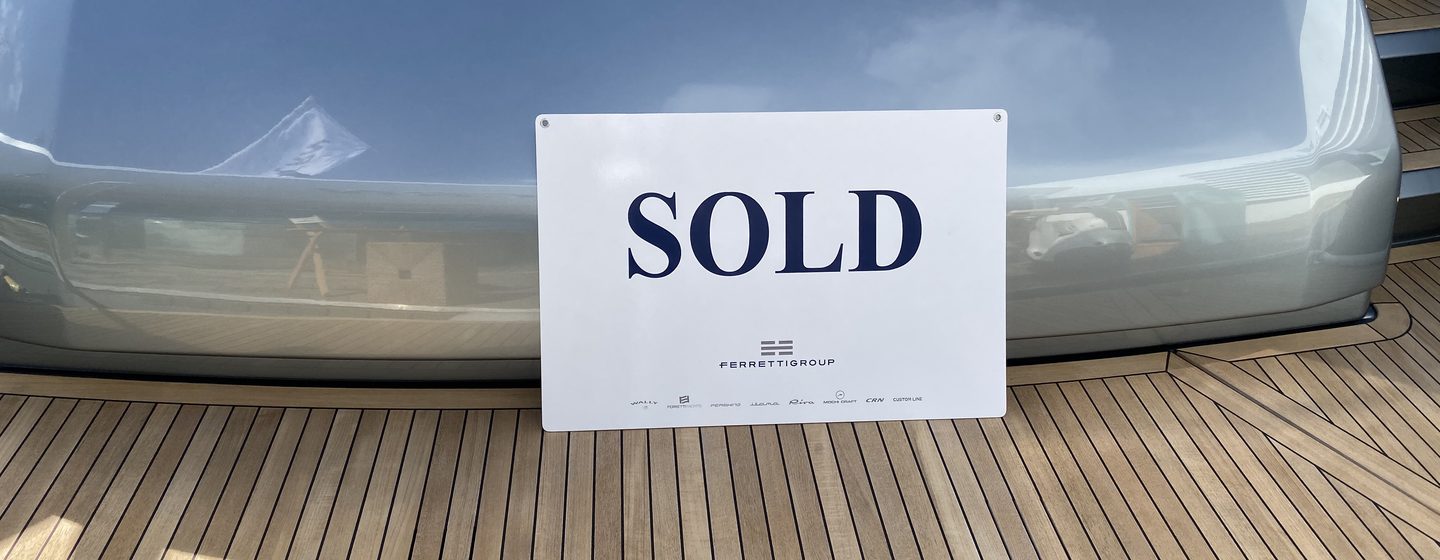The financing of a yacht is influenced by various pivotal factors, with the predominant determinant often revolving around the yacht's cost or overall value.
When it comes to financing your yacht purchase, we understand the importance of tailored borrowing options. Here, we take a look at the choices designed for every situation, every boat, and every circumstance.
Overview
Yacht financing encompasses two broad categories: mainstream yacht loans and mortgages for production yachts, and the intricate realm of large yacht finance. Distinguishing between the two can vary significantly depending on the lender or broker; however, a general distinction tends to hover around $5 million US (GBP £4.1 million or EUR €4.5 million) at the time of writing.
Beyond this threshold, a realm of bespoke agreements, private banking arrangements, offshore holding companies, and securities portfolios unfolds.
For further exploration, refer to our guide on superyacht finance.
Conversely, if your interest lies in mainstream yacht finance, continue reading for valuable insights.

Mainstream Yacht Finance
Mainstream yacht finance transactions typically follow a straightforward path: for a mid-market deal, you'll likely engage with a traditional lending institution and be presented with a straightforward selection of two or three borrowing arrangements.
However, at the lower end of the market, securing favorable marine finance deals can be challenging. Many mid-market lenders prefer financing brand-new or relatively recent second-hand yachts, often refusing to support older or lower-value boats. If you're seeking financing for a medium-sized vintage motor yacht, or one constructed three decades ago, your options may be constrained to a bank loan secured against another asset, such as your home.
Shop around. Most lenders have an automated quote generator on their websites. Fill in the forms and compare, making sure that you read and understand the small print."
The Borrowing Options
Marine Loan
A marine loan is intended solely to buy a boat. This type of loan recognizes the unique nature of boat financing and is structured to accommodate the specific needs of boat buyers. Most marine loans are secured loans, meaning the boat itself serves as collateral for the loan. If the borrower fails to repay the loan, the lender has the right to repossess the boat to recover the outstanding balance.
Marine loans come with varying terms, including loan duration and interest rates. Loan durations can range from a few years to over a decade, and interest rates can be fixed or variable. The terms often depend on factors such as the borrower's creditworthiness, the type of boat, and the loan amount.
A down payment, or deposit, is usually required. The down payment is a percentage of the boat's purchase price that the borrower pays upfront. The specific percentage can vary, but it's typically around 10-20%.
Marine Mortgage
If you seek a loan secured against the yacht you're purchasing, three common types of marine mortgages are available. Opting for a variable-rate marine mortgage offers heightened flexibility, typically with a smaller or no financial penalty for early repayment, though your monthly repayments will vary with changes in the base rate.
Alternatively, a fixed-rate marine mortgage, known as a 'balanced payment plan,' ensures consistent monthly repayments. However, the loan duration may adjust if the base rate fluctuates, and there might be a more substantial financial penalty for early repayment.
A third option involves a 'balloon payment' marine mortgage, characterized by a final lump sum due at the end of the term. While monthly repayments are generally lower and fixed throughout the mortgage duration, the size of the balloon payment is subject to variations in the base rate.
Loan? Mortgage? What's the difference?
A marine mortgage is a specific type of marine loan that emphasizes the secured nature of the financing, with the boat acting as collateral. "Marine loan" is a broader term that encompasses various types of financing for boats, including both secured and unsecured options, with varying terms.
The choice between the two terms may depend on regional conventions, the lending institution's terminology, or specific legal and financial considerations.
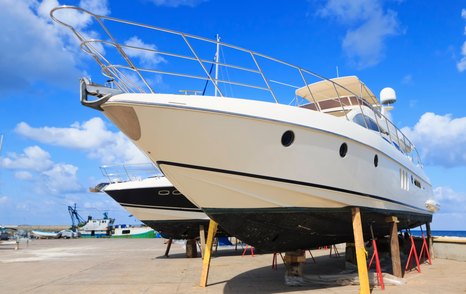
What are Typical Interest Rates for Yacht Finance?
Like any purchasing loan arrangement, financing a yacht is typically more cost-effective when secured against an asset other than the yacht itself. As a rule, larger loan amounts often attract more favorable terms than smaller loans.
At the upper echelon, for multimillion-dollar loans where a securities portfolio serves as collateral, you may negotiate a bespoke financial arrangement with highly favorable terms. For those deemed strong prospects for a broader array of financial services, there's potential to secure a deal only two or three percent above the LIBOR interbank lending rate.
In the realm of marine mortgages in the hundreds of thousands, a deposit of around 20 percent of the boat's value is customary. For a variable-rate marine mortgage with monthly repayments spanning seven to 12 years, or a fixed-rate alternative, interest rates typically range from five to six percent APR, with slight variations.
Conversely, for yachts valued under $30,000 (£25,000 or €27,000), a standard finance deal over five years might entail an APR of 16 to 18 percent. Considerably more favorable terms may be extended if a substantial upfront deposit, perhaps around 20 percent, is feasible.
Dealer Financing
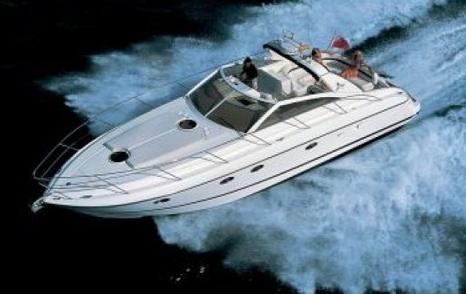
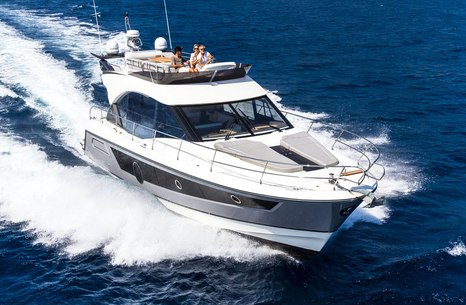
Preferred Lenders
Most new boat dealers offer finance packages with a partner or preferred lender and if you decide to buy a yacht at a boat show, the salesman will walk you along to the lender’s stand after you agree on a purchase price, or just give you a loan application form to fill in. You should always shop around but you may well find that they offer the best deal.
Yacht Builder Options
A few manufacturers run their own finance company, for example, Beneteau Group (which includes Jeanneau, Prestige, Monte Carlo Yachts, Lagoon, Four Winns, Delphia, Glastron, and Scarab as well as their own eponymous brand). It’s worth being aware that they’re likely to offer very competitive deals on finance compared to alternative lenders at times when the new boat market has been a bit slow.
Purchasing a Used Boat
When acquiring a pre-owned yacht, the majority of lenders typically require you to coordinate and cover the cost of lifting the yacht out of the water. A qualified marine surveyor will then conduct a comprehensive survey to assess its condition and value. Lenders typically insist on reviewing and approving the survey report before finalizing the financing agreement. It's essential to note that surveys can incur substantial costs, especially when acquiring a sizable yacht internationally.
Read our guide to marine surveys and surveyors to find out more.
How do I Finance a New Build?
Most mid-market lenders are geared up for this. They’ll make a series of so-called stage payments to the builder after receiving proof that an agreed sequence of milestones in the build process has been completed. These will usually tie in with moments when the collateral value has been added to the build – one payment after the engines are installed, another after the interior is fully fitted, and so on.

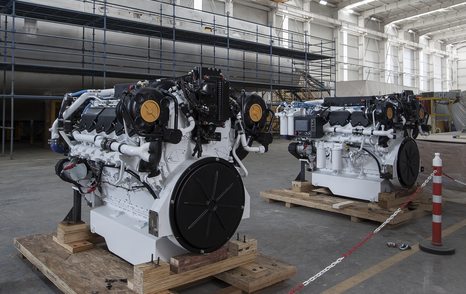
Yacht Construction Loan
Specialized Lenders: There are lenders who specialize in yacht construction loans. These loans are designed to cover the costs associated with building a new yacht.
Secured Loan: Similar to a mortgage, a yacht construction loan is a secured loan where the yacht being built serves as collateral. If the borrower defaults, the lender may take ownership of the partially or fully constructed yacht.
Progress Payments
Staged Payments: Some shipyards structure the payment schedule in stages based on the progress of the construction. Buyers make payments at different milestones, such as the completion of the hull or the installation of key components.
Self-Financing: Buyers may use their own funds for each stage of construction, possibly supplemented by a construction loan.
Owner Financing
Direct Financing: In some cases, yacht builders or shipyards may offer financing directly to the buyer. This could involve a customized payment plan or financing arrangement.
Lease-Purchase Options: Some builders may provide lease-purchase options, allowing the buyer to lease the yacht during the construction period and then purchase it outright once completed.
Personal Funds
Out-of-Pocket Payments: High-net-worth individuals or those with substantial savings may choose to finance the new build yacht using their personal funds, avoiding the need for external financing.
Private Banking
Wealth Management Services: Individuals with significant assets may leverage private banking services. Private banks may offer tailored financial solutions, including loans or lines of credit, to finance luxury purchases such as a new build yacht.
Combination of Financing Methods
Hybrid Approach: Buyers often use a combination of financing methods. For example, they may use a construction loan for the initial stages and then switch to a traditional yacht loan or other financing arrangements upon completion.

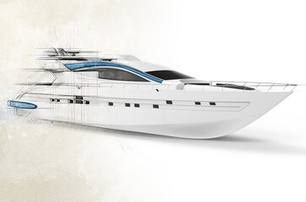

Navigating yacht finance requires careful consideration of tailored approaches. Whether securing a loan for a pre-owned vessel or financing a new build, understanding diverse options and collaborating with reputable lenders are key. From preferred dealer partnerships to specialized marine loans, the yacht finance landscape offers varied avenues. Informed decision-making, diligent research, and expert guidance are crucial for a smooth journey into the world of luxury yachting.
